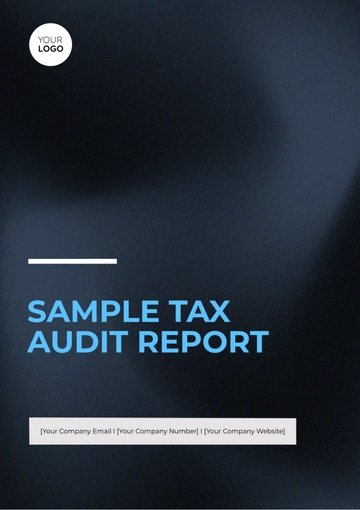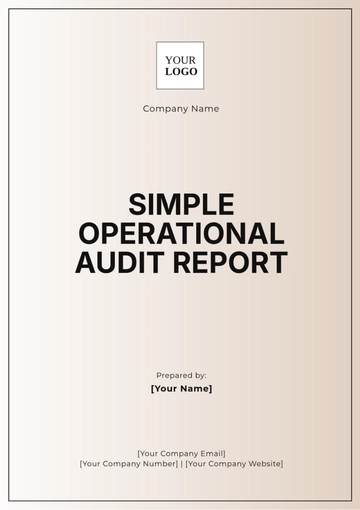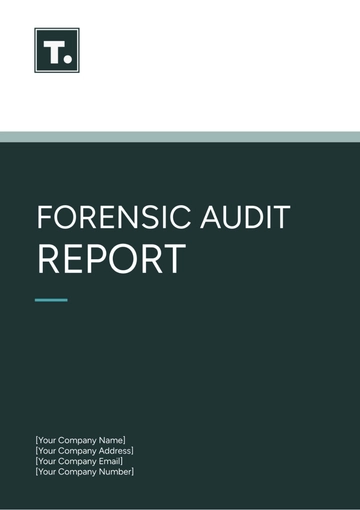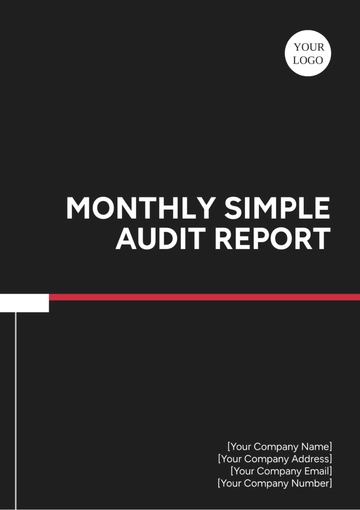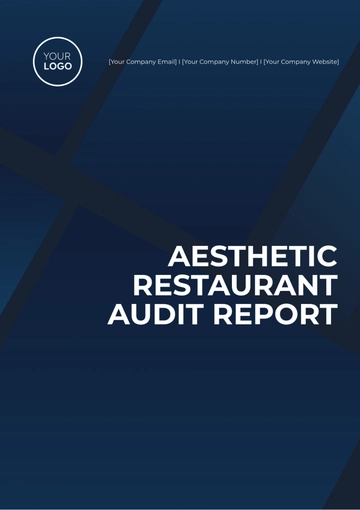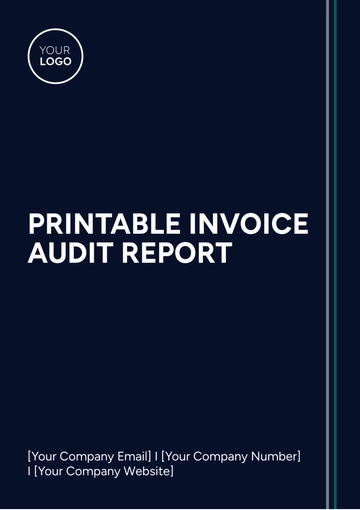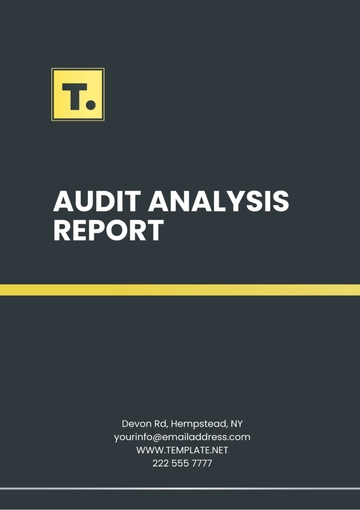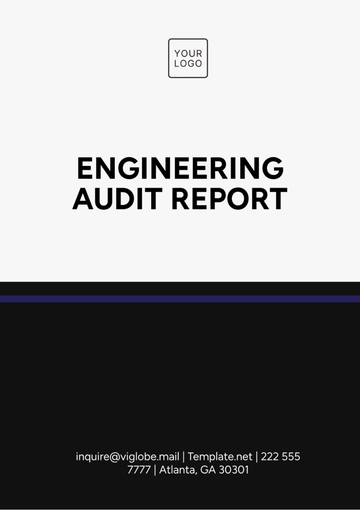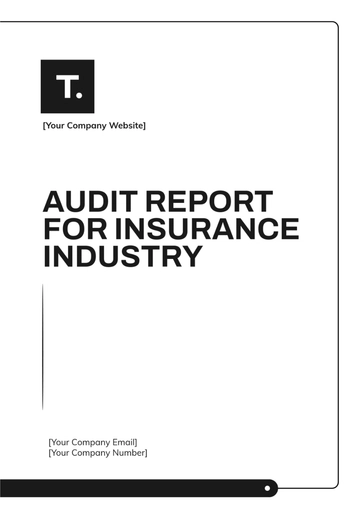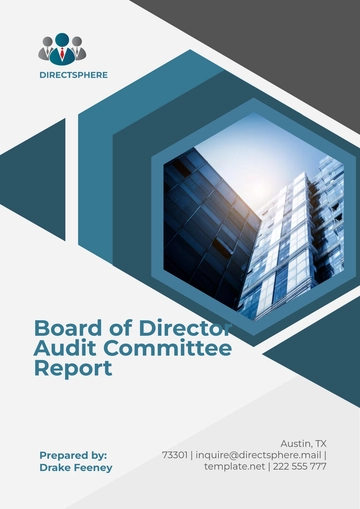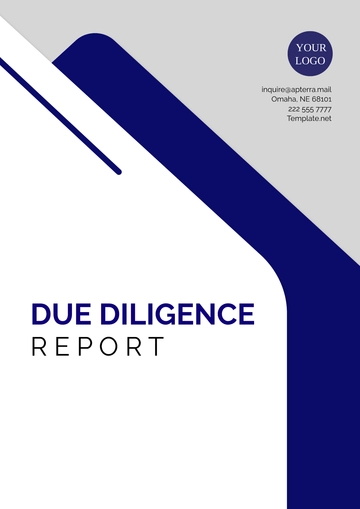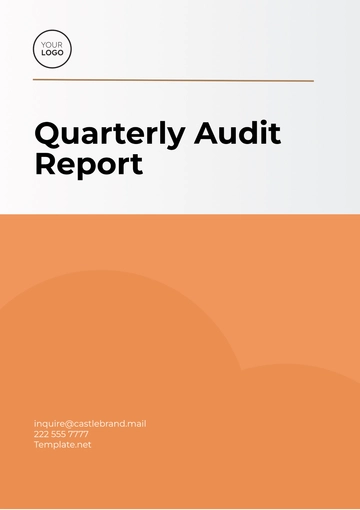Free Advertising Media Audit Full Report

Audit Conducted by: [YOUR NAME]
Date of Audit: January 1, 2051
I. Executive Summary
This Advertising Media Audit, conducted for [YOUR COMPANY NAME], provides a comprehensive review and analysis of current advertising media strategies. The audit aims to evaluate the effectiveness, reach, and ROI of the current media investments and offer actionable recommendations.
II. Audit Objectives
The audit has several key objectives:
Evaluate the effectiveness of the current media strategies being employed.
Conduct a thorough analysis of media spending and return on investment (ROI) to ensure resources are being utilized efficiently.
Identify any areas that could benefit from improvement.
Offer actionable recommendations for optimization to enhance overall performance and outcomes.
III. Audit Scope
1. Media Channels Covered
This audit encompasses various media channels, including Television, Radio, Print, Digital (Social Media, PPC), and Outdoor advertising. By analyzing these diverse platforms, we aim to provide a holistic view of the current media landscape and identify which channels deliver the best return on investment. Each channel is evaluated based on its reach, engagement, and cost-effectiveness.
2. Time Period Analyzed
The analysis covers the period from January 1, 2050, to December 31, 2050. This timeframe allows for a full-year assessment of media performance, capturing seasonal trends, campaign cycles, and consumer behavior shifts throughout the year. It ensures that the audit provides a comprehensive understanding of the annual performance and highlights any significant variations in media effectiveness.
IV. Current Media Strategies
1. Television
Current television advertising focuses on prime-time slots and national networks, aiming to maximize reach and visibility. The ads are strategically placed during high-viewership periods to capture the attention of a broad audience. This channel has a significant portion of the budget allocated, given its wide reach and impact. Spend for this channel is substantial, reflecting its importance in the overall media mix.
2. Radio
Radio advertisements are primarily localized, targeting specific markets during peak commute hours. These ads aim to reach a mobile audience, capitalizing on the captive attention of listeners during their daily routines. The strategic timing ensures high engagement, though the spending is relatively lower compared to television, considering the localized nature and lower production costs.
3. Print
Print ads are placed in major newspapers and industry-specific magazines to target a more niche and engaged audience. These ads focus on delivering detailed information and building credibility within specific sectors. Although print media is declining in some demographics, it remains valuable for certain audiences. The spending for this channel reflects its targeted approach and the premium costs associated with prominent print placements.
4. Digital
Digital media efforts include a combination of social media campaigns, pay-per-click (PPC) ads, and influencer partnerships. These digital strategies are designed to reach a tech-savvy audience and leverage the interactive capabilities of online platforms. The flexibility and measurable nature of digital advertising make it a critical component of the media mix. Spend for this channel is allocated significantly due to its high potential for engagement and conversion.
5. Outdoor
Outdoor advertising, including billboards and transit ads, is employed to ensure continuous brand visibility in high-traffic areas. These ads aim to capture the attention of commuters and pedestrians, reinforcing brand messages in everyday environments. The spending for outdoor advertising is moderate, reflecting its role in maintaining a consistent brand presence.
V. Performance Analysis
1. ROI Metrics
Media Channel | Spend (USD) | ROI (%) |
|---|---|---|
Television | 2,000,000 | 150% |
Radio | 500,000 | 120% |
1,000,000 | 80% | |
Digital | 1,500,000 | 200% |
Outdoor | 700,000 | 90% |
2. Audience Reach
The current media strategy has an extensive reach, engaging approximately 10 million consumers across all channels. This widespread reach is crucial for brand awareness and market penetration. Television and digital channels contribute significantly to this reach, while radio and print add depth by targeting specific audiences. Outdoor advertising ensures the brand remains visible in everyday settings, complementing the reach of other channels.
VI. Recommendations
1. Optimize Digital Spend
Given the high ROI potential of digital channels, it is recommended to shift 20% of the budget from print and radio to digital media. This reallocation will leverage the strengths of digital platforms, enhancing engagement and conversion rates. Investing in advanced targeting techniques and data analytics will further optimize digital spending and maximize returns.
2. Increase Social Media Presence
To capitalize on the growing influence of social media, it is advisable to invest in more targeted social media campaigns and partnerships with influencers. These efforts should focus on creating engaging content that resonates with the audience and drives interaction. Building a strong social media presence will enhance brand visibility, foster community engagement, and support other marketing initiatives.
3. Monitor and Adjust
Regular monitoring of performance metrics is essential to ensure ongoing optimization of media strategies. Implementing a robust analytics framework will enable real-time tracking of key performance indicators (KPIs) and allow for agile adjustments. By staying responsive to market trends and consumer behavior, the company can continuously refine its strategies and maintain high effectiveness.
VII. Conclusion
This audit reveals that while there are strengths in the current media strategies, there are also significant opportunities for optimization. The analysis highlights the effectiveness of digital media and the need to reallocate resources to maximize ROI. Implementing the recommendations provided will enhance the overall performance of advertising efforts, ensuring better utilization of resources and improved outcomes. By continuously monitoring and adjusting strategies, [YOUR COMPANY NAME] can maintain a competitive edge and achieve sustained success in its advertising endeavors.
Contact Information:
Contact Person: [YOUR NAME], [YOUR EMAIL]
Company: [YOUR COMPANY NAME]
Website: [YOUR COMPANY WEBSITE]
Social Media: [YOUR COMPANY SOCIAL MEDIA]
- 100% Customizable, free editor
- Access 1 Million+ Templates, photo’s & graphics
- Download or share as a template
- Click and replace photos, graphics, text, backgrounds
- Resize, crop, AI write & more
- Access advanced editor
Enhance your advertising strategies with the Advertising Media Audit Full Report Template from Template.net. This editable template in our Ai Editor Tool allows you to customize your audit report for advertising media. Analyze your advertising efforts effectively and optimize your campaigns with this customizable template. Make this template yours now!
You may also like
- Sales Report
- Daily Report
- Project Report
- Business Report
- Weekly Report
- Incident Report
- Annual Report
- Report Layout
- Report Design
- Progress Report
- Marketing Report
- Company Report
- Monthly Report
- Audit Report
- Status Report
- School Report
- Reports Hr
- Management Report
- Project Status Report
- Handover Report
- Health And Safety Report
- Restaurant Report
- Construction Report
- Research Report
- Evaluation Report
- Investigation Report
- Employee Report
- Advertising Report
- Weekly Status Report
- Project Management Report
- Finance Report
- Service Report
- Technical Report
- Meeting Report
- Quarterly Report
- Inspection Report
- Medical Report
- Test Report
- Summary Report
- Inventory Report
- Valuation Report
- Operations Report
- Payroll Report
- Training Report
- Job Report
- Case Report
- Performance Report
- Board Report
- Internal Audit Report
- Student Report
- Monthly Management Report
- Small Business Report
- Accident Report
- Call Center Report
- Activity Report
- IT and Software Report
- Internship Report
- Visit Report
- Product Report
- Book Report
- Property Report
- Recruitment Report
- University Report
- Event Report
- SEO Report
- Conference Report
- Narrative Report
- Nursing Home Report
- Preschool Report
- Call Report
- Customer Report
- Employee Incident Report
- Accomplishment Report
- Social Media Report
- Work From Home Report
- Security Report
- Damage Report
- Quality Report
- Internal Report
- Nurse Report
- Real Estate Report
- Hotel Report
- Equipment Report
- Credit Report
- Field Report
- Non Profit Report
- Maintenance Report
- News Report
- Survey Report
- Executive Report
- Law Firm Report
- Advertising Agency Report
- Interior Design Report
- Travel Agency Report
- Stock Report
- Salon Report
- Bug Report
- Workplace Report
- Action Report
- Investor Report
- Cleaning Services Report
- Consulting Report
- Freelancer Report
- Site Visit Report
- Trip Report
- Classroom Observation Report
- Vehicle Report
- Final Report
- Software Report


